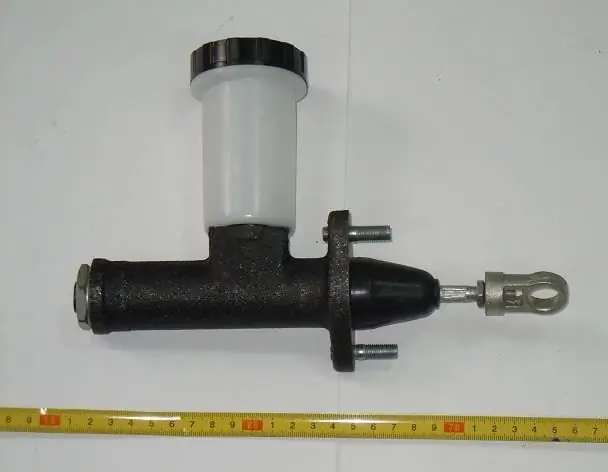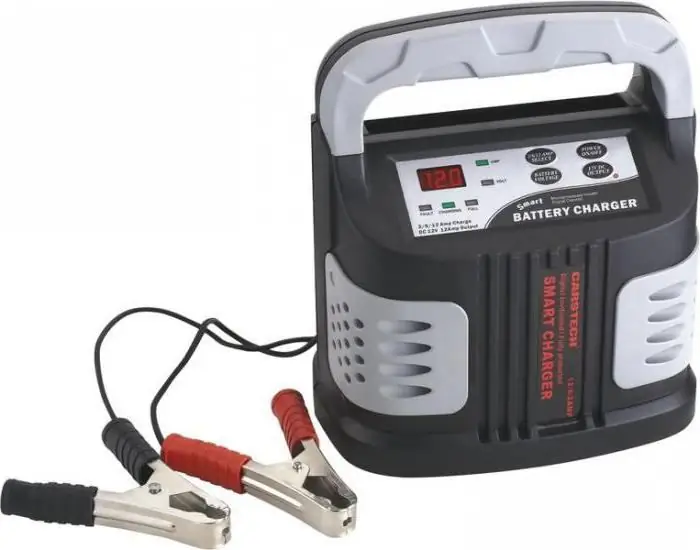2025 Author: Erin Ralphs | [email protected]. Last modified: 2025-01-22 21:14:11
Mechanics is exactly the science without which the stable technical progress of mankind is simply unthinkable today. Any machine contains, to one degree or another, mechanisms that ensure its normal functioning. And in many kinematic diagrams of these units, a device called a cylindrical gearbox is certainly listed.
Definition
Let's take a closer look at this widespread universal mechanical device. So, a cylindrical gearbox is a mechanism consisting of gears, enclosed in a housing and often operating in an oil bath. What is meant by "cylindrical"? This means that the axes of the gearbox shafts are parallel to each other. According to the number of gears, the mechanism can be single-stage, two-stage, three-stage, etc.
Destination
Absolutely every cylindrical gearbox primarily serves to reduce the speed and, accordingly, increase the torque of the driven shaft compared to the driving shaft. In other words, the gearbox reduces the angular velocity of the motor shaft.

Dignity
Reducercylindrical has the following undeniable advantages:
- Quite high efficiency.
- The ability to withstand heavy loads and at the same time transmit large powers over a distance with almost zero losses.
- The ability to function smoothly even under uneven loads, as well as with any number of starts and stops.
- Lack of self-braking (unlike worm analogues), and therefore it is possible to turn the output shaft by hand.
- The highest indicator of reliability.
- Low heat generation.
- Wide choice of mechanism by gear ratio.
Negative qualities
A single-stage cylindrical gearbox (as well as a multi-stage one) has the following disadvantages:
- Increased noise level during operation.
- High stiffness of the gears, which does not allow to compensate for dynamic loads.
- No reversibility.

Classification
Cylinder two-stage, single-stage and multi-stage gears are divided by the arrangement of teeth:
- Straight teeth.
- Helical.
- Chevron.
- With circular tooth.
Depending on the profile of the teeth, gearboxes can be involute with Novikov gearing and cycloidal.
The peripheral speed differentiation will be as follows:
- Slow speed (peripheral speed does not exceed 3 m/s).
- Mid-speed (peripheral speed ranges from 3 to 15 m/s).
- High-speed (peripheral speed ranges from 15 to 40 m/s).
- Fast speed (over 40 m/s).
Device
The helical gearbox, the drawing of which is shown below, in the general configuration consists of:
- Cases.
- Shafts.
- Bearings.
- Lubrication systems.
In mechanics, a gear wheel with a smaller number of teeth is called a gear, and with a large number of teeth, a wheel.

Installation
Single-stage and multi-stage helical gearboxes have the same installation principle, which consists in observing several rules, namely:
- The underlying surface for the gearbox should be as flat as possible in order to exclude the possibility of distortion.
- It is imperative to align the mounted couplings in order to minimize the radial forces at the ends of the shafts.
- It is strictly forbidden to hit the ends of the shafts, as this may lead to premature failure of the rolling bearings.
- Tighten the fixing bolts evenly in order to level the possibility of loosening the gearbox during its subsequent operation.

Commissioning rules
A two-stage cylindrical gearbox, like, in fact, any other gearbox, must begin itswork based on these requirements:
- Shaft ends are cleaned from corrosion or dirt.
- Unscrew the oil drain screw and determine the absence / presence of condensate.
- Fill oil into the crankcase through a fine-mesh filter in order to exclude the possibility of abrasive particles getting inside the gearbox. At the same time, the temperature of this oil should not be lower than 20 degrees Celsius.
- It is also advisable to scroll the shafts by hand and listen to the operation of the gearing.
The main parameters to consider when choosing a spur gearbox are its gear ratio and center distance.
Cylindrical two-stage gearbox is the most common version of gearboxes currently used (about 65%). The gear ratios of these mechanisms range from 8 to 40. In cases where there is an urgent need to improve the operation of a loaded low-speed stage, gearboxes with a bifurcated high-speed stage are used.
Recommended:
Clutch master cylinder. "Gazelle": device and repair of the clutch master cylinder

To set the car in motion, it is necessary to transmit torque from the engine to the gearbox. Clutch is responsible for this
UAZ-22069 car. UAZ "loaf": general information, equipment and features

This article will discuss the well-known car UAZ-22069, which is popularly called the "loaf". Initially, we will give general information on the car, then we will touch on its equipment and, finally, we will talk about its features. This article will appeal to fans of the domestic auto industry
Car dealership "Avtoalleya" (Kashirskoe shosse, 61): reviews and general information

In Moscow every year there are new car dealerships. Because of this, the number of companies selling cars is growing rapidly. It is already difficult for people to understand where services for the purchase, maintenance and repair of cars are produced more efficiently. It is best to focus on the reviews of consumers who have already contacted the company you are interested in. From them you can draw useful information and draw your own conclusions
Smart chargers for car batteries: general information, features, reviews

In the cold season, there is always a risk of running out of a car battery. A specialized charger will help save the car from turning into a cold real estate. Thanks to him, besides, you no longer have to, for the umpteenth time, seek outside help
433360 ZIL: general information, history, technical characteristics and cost of the car

This article will talk about a fairly well-known car of the ZIL series - 433360. We will touch on a little history of the creation of this car, then we will talk about technical characteristics and finish the article with a conversation about the cost of a car in our time

